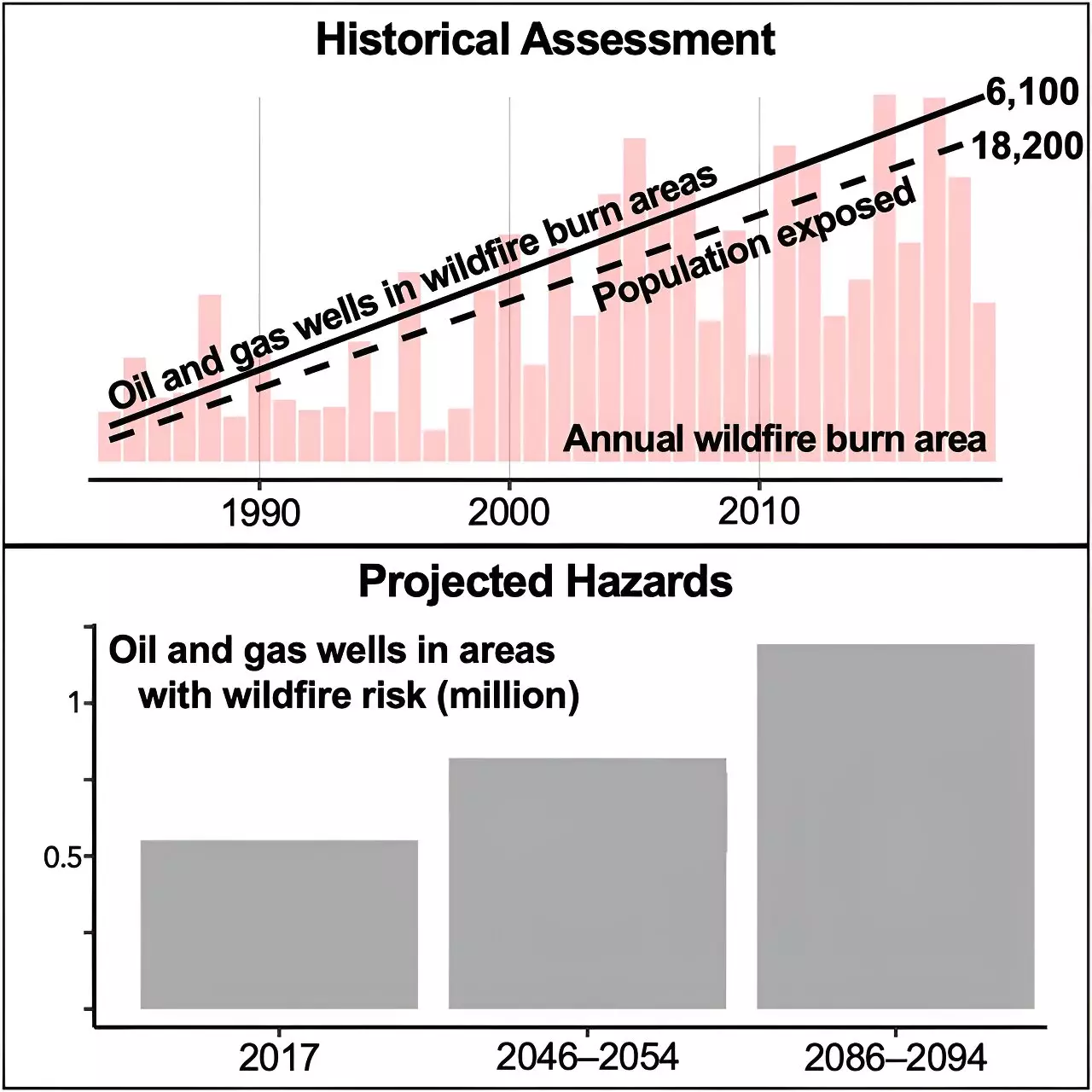

A recent study conducted by researchers from the University of California, Berkeley, sheds light on the concerning issue of oil and gas wells located in wildfire-prone areas across the western United States. More than 100,000 wells have been identified in regions that have been affected by wildfires in recent years, with approximately 3 million people living in close proximity to these wells. The study, published in the journal One Earth, emphasizes the importance of understanding the compound hazards posed by wildfires on oil and gas facilities and the need for informed policy decisions regarding future drilling activities.
David J.X. González, an assistant professor of environmental health sciences at UC Berkeley, highlights the historical implications of oil and gas development in California and its impact on communities residing in areas at high risk of wildfires. Certain counties, such as Los Angeles and Kern, are not only densely populated but also heavily dependent on oil and gas extraction. The study reveals that the disparities in exposure to oil and gas wells affected by wildfires disproportionately impact Asian, Black, Hispanic, and Native American populations, raising concerns about environmental justice and public health implications.
While the study focuses on the proximity of oil and gas wells to wildfire-affected areas, it also raises important questions about the potential health risks associated with fires burning near these facilities. González underscores the need for further research on the health effects of fires on oil and gas operations, particularly in populated regions where fire response efforts may be complicated by the presence of such facilities. The combination of toxic chemicals used in oil fields and the release of volatile organic compounds during wildfires poses significant challenges for public health and safety.
As the number of oil and gas wells in high-risk wildfire areas is expected to double by the end of the century, there is a pressing need for enhanced protections and policies to safeguard communities and the environment. González advocates for stricter regulations to mitigate the potential hazards posed by drilling activities in fire-prone regions and emphasizes the importance of considering the long-term health effects of permitting new wells in these areas. Public land managers play a crucial role in ensuring that industrial activities do not further exacerbate the risks associated with wildfires.
The study’s findings underscore the complexity of the intersection between oil and gas operations and wildfires, highlighting the need for proactive measures to address the growing threat to public health and environmental sustainability. By acknowledging the compounding factors at play and advocating for informed decision-making, we can strive to protect communities and ecosystems from the potentially devastating consequences of fires in areas with oil and gas infrastructure.
In the world of pharmaceuticals, innovation often hinges on finding new compounds that can lead…
In the heart of the Amazon basin, drastic climate changes present an alarming reality that…
Air fryers have rapidly surged in popularity, captivating home cooks and culinary enthusiasts alike. When…
In an era where technology and social media reign, the importance of sleep often takes…
In an era where environmental consciousness is paramount, the maritime industry has long been scrutinized…
Radionuclides, often relegated to discussions surrounding nuclear energy and radioactive waste, have far-ranging implications for…
This website uses cookies.